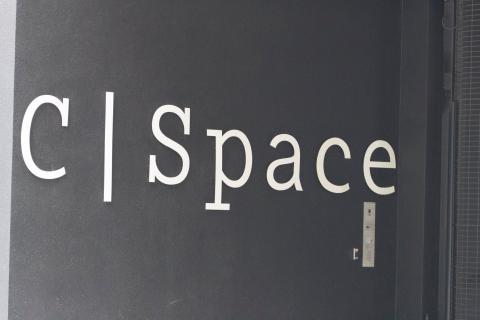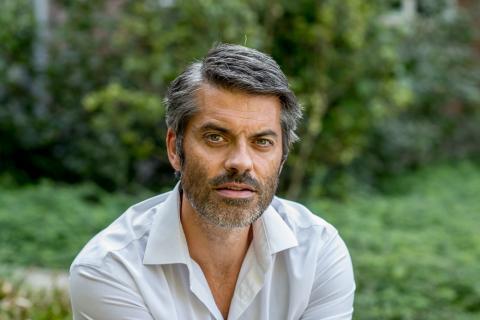Navigating Space for Creativity
by Jacqueline Ann Surin in Book Reviews

Space matters. Indeed, studies show that location is more important to the creative process than we might think.
Archimedes, Sir Isaac Newton and J.K. Rowling would all agree. They were respectively in a bath, under an apple tree and on a train when they each had their eureka moment.
The question is, how can coaches and facilitators utilise space to help their coachees solve problems, generate ideas and spark creativity? One answer lies in coaching with Clean Space.
Clean Space: The book
Co-authored by James Lawley and Marian Way, Insights in Space provides valuable research and perspectives on understanding the influence of space in our thinking and behaviour. Additionally, the book examines what conditions are needed for creativity, and how running a Clean Space session will create those conditions.
James and Marian list the following conditions that make creativity more likely to occur:
- Context: including serendipity
- Utilising space: location matters
- Individuating: making distinctions
- Relating: making connections
- Moving: in physical and mental space
- Iterating: building or honing ideas
- Integrating: seeing the big picture
- Metaphor: juxtaposing ideas
If you’re like me, you might be thinking, “That’s quite a lot of conditions! How can I create all of those conditions in just one session with my coachee so that it’s more likely that creativity will be sparked, ideas formed and problems solved?”
The good news is that James and Marian demonstrate just how by using Clean Space. The book provides a simple process for executing a Clean Space session.
And within each step of the process, James and Marian guide us with the kinds of questions and instructions to use so that the process keeps moving along until new knowledge emerges for the coachee (called “explorer” in the book).
What’s different about this particular way of working with space is that it is done cleanly. The instructions and questions you would pose to an explorer are clean. This means they are completely free of judgments, suggestions, assumptions or insinuations so that everything that happens during a session comes from within the client’s experience. The coach facilitates the exploration without determining that it should go in one direction or another.
To give readers an experience of how this might work for them, the book provides a mini Clean Space exercise at the start. It invites readers to go through this exercise themselves, ending with, “And what do you know here now? And what difference does knowing that make?”
Several other things make this book a valuable resource. One, the book is littered with numerous case examples and illustrations from the authors’ work. Many of these provide suggestions for “What if….?” situations. As a coach and facilitator myself, I know how useful it is to anticipate an unusual response from a coachee and to have a back-up plan should that happen.
And finally, the book addresses how to run Clean Space for couples and groups. When I first wanted to run Clean Space for an organisation I worked with, I wondered how complicated it might get. The book demonstrates that it needn’t be. Following the process ensures that any Clean Space coach will be kept on track. The creativity needed is that of designing the instructions for a group so that every individual is engaged throughout the process.
This is where attending the Clean Space Workshop in London in July this year proved invaluable.
Clean Space: The Workshop
At this workshop, what worked really well was how the learning was designed. James and Marian would introduce a Clean Space routine then demonstrate it then set us off to practise the routine. After each practice, there was a debrief so we could crystalise the principles for what to do as coaches in any given situation.
Participating in a Clean Space workshop is significantly different from reading a book on Clean Space, although reading the book ahead of the workshop is highly recommended. For one, during the demonstrations and practice, the space becomes psychoactive with an explorer’s stuff. The session goes live!
Seeing is believing – and it is clear to me that Clean Space works, and it very often works quickly to help explorers gain new insights, knowledge and motivation. Being a demo subject certainly helped me figure out my next professional step and resulted in me applying and then getting a new job! All it took was three brief Clean Space sessions during the workshop to help me gain clarity about what was going on for me and what I wanted for myself.
Another benefit of the workshop was that James and Marian provided live supervision to participants during our practice sessions. Clean Space is both emergent and iterative. Whatever happens is what needs to happen for the explorer in the space. Only by attending a Clean Space workshop will learners receive the benefit of real-time learning with on-the-spot tuition from the experts.
And finally, the workshop was valuable because we spent two days learning how to design Clean Space for individuals and groups in different kinds of contexts. For example, how might you design a session with an explorer in an open office? Or in a cramped and public café? Or for a group who need to make a decision together?
Rather than providing an expert view on different contexts that may or may not happen for each coach, the workshop encouraged us to work together in pairs and small groups to devise activities for these contexts – and try them out. The result was rich learning on the principles of Clean Space.
Knowing these principles, and understanding how to adhere to them, means that no matter what the context and what kind of client I’m working with, I know I’ll know what to do.
If you’d like to attend - or host - a Clean Space workshop, contact us for more information.
The book Insights in Space can be purchased here.
Related blog posts
9 Reasons to Learn and Use Clean Space
14th Apr 2019
Clean Space for Scoping and Deepening Outcomes
28th Mar 2019
Finding your creative place with Clean Space
7th Feb 2019
Using Clean Space with organizational trauma
7th Nov 2018
About Jacqueline Ann Surin
Jacqueline Ann Surin is a Level 1 Clean Facilitator, the first Master Level Systemic Modeller in Asia, and is qualified as a Professional Certified Coach (PCC) with the ICF. She is an associate of Clean Learning and Training Attention in the UK, and a specialist-partner of the Singapore-based BeInClarity. She was previously an award-winning journalist and has a published chapter in Clean Language Interviewing: Principles and applications for researchers and practitioners.
She can be found on LinkedIn.
- Blog categories
- A - Z of Clean
- Adventures in Clean
- Book Reviews
- Business
- Clean Ambassadors
- Clean Interviewing
- Clean is like ...
- Clean Language
- Clean Language Questions
- Clean Space
- Client Stories
- Coaching
- Creativity
- #DramaFree
- Education
- Health
- ICF
- Life Purpose
- Listening
- Metaphor
- Modelling
- Outcomes
- Practice Group
- Symbolic Modelling
- Systemic Modelling
- Training



